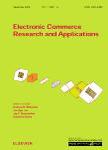版权所有:内蒙古大学图书馆 技术提供:维普资讯• 智图
内蒙古自治区呼和浩特市赛罕区大学西街235号 邮编: 010021

作者机构:Huazhong Univ Sci & Technol Sch Mech Sci & Engn State Key Lab Digital Mfg Equipment & Technol Wuhan 430074 Peoples R China Wuhan Second Ship Design & Res Inst Wuhan 430064 Peoples R China Royal Inst Technol Dept Prod Engn S-10044 Stockholm Sweden Coventry Univ Fac Engn & Comp Coventry CV1 5FB W Midlands England Univ Strathclyde Fac Engn Glasgow G1 1XJ Lanark Scotland
出 版 物:《Electronic Commerce Research and Applications》 (电子商务研究及应用)
年 卷 期:2016年第20卷
页 面:59-68页
核心收录:
学科分类:1202[管理学-工商管理] 08[工学] 0812[工学-计算机科学与技术(可授工学、理学学位)]
基 金:National Natural Science Foundation of China National Basic Research Program of China (973 Program) [2014CB046705] Special Funds for the Scientific and Technological Cooperation EU from Ministry of Science and Technology of China Independent Innovation Research Fund of Huazhong University of Science and Technology [2014XJGH010]
主 题:Disassembly sequence planning E-business Environmental issues Math programming Multi-objective optimization Services Sustainability
摘 要:Disassembly sequence planning plays an important role in the end-of-life treatment of electrical and electronic equipment waste (e-waste). Effective planning methods can improve recovery rates and reduce environmental impacts of e-waste. In previous work, neither mathematical models nor optimization algorithms offered a satisfactory solution for this multi-objective disassembly problem. We present a multi-objective model for the problem and a modified teaching-learning-based optimization (MTLBO) algorithm to find the Pareto-optimal frontier. We use numerical simulations to demonstrate and verify the effectiveness and robustness of the algorithm. To do effective disassembly planning, all the participants in the lifecycle of e-waste should work together. Disassembly and recovery of e-waste involve complex processes across the lifecycle. Information support services, disassembly modeling and optimization services must be integrated using computer networks. We also propose a service-oriented framework to support business integration for the participants in the e-waste lifecycle. Effective and optimized disassembly planning can be achieved by invoking the related distributed services. The proposed framework is a novel e-business application for the end-of-life treatment of e-waste. (C) 2016 Elsevier B.V. All rights reserved.